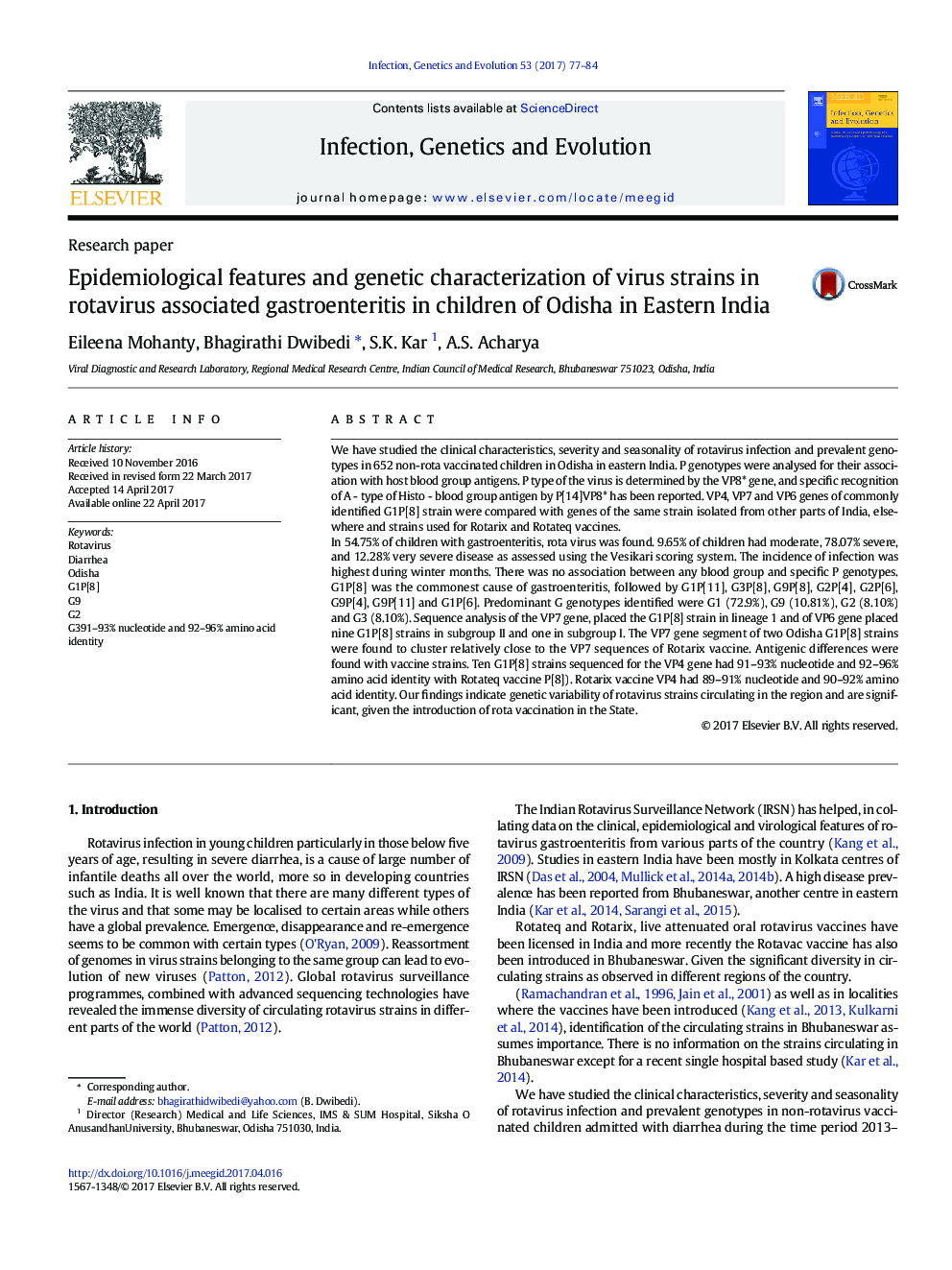| کد مقاله | کد نشریه | سال انتشار | مقاله انگلیسی | نسخه تمام متن |
|---|---|---|---|---|
| 5590661 | 1570150 | 2017 | 8 صفحه PDF | دانلود رایگان |
- Rota prevalence of 54.75% was found in a hospital based study in eastern India.
- G1P[8] was commonest and G genotypes identified were G1, G9, G2 and G3.
- VP7 genes of the G1P[8] strains have higher identity with the Rotarix vaccine strain while the VP4 gene was more similar to the Rotateq vaccine.
- There was no association between blood group and specific P genotypes.
- Antigenic differences were found with vaccine strains.
We have studied the clinical characteristics, severity and seasonality of rotavirus infection and prevalent genotypes in 652 non-rota vaccinated children in Odisha in eastern India. P genotypes were analysed for their association with host blood group antigens. P type of the virus is determined by the VP8* gene, and specific recognition of A - type of Histo - blood group antigen by P[14]VP8* has been reported. VP4, VP7 and VP6 genes of commonly identified G1P[8] strain were compared with genes of the same strain isolated from other parts of India, elsewhere and strains used for Rotarix and Rotateq vaccines.In 54.75% of children with gastroenteritis, rota virus was found. 9.65% of children had moderate, 78.07% severe, and 12.28% very severe disease as assessed using the Vesikari scoring system. The incidence of infection was highest during winter months. There was no association between any blood group and specific P genotypes. G1P[8] was the commonest cause of gastroenteritis, followed by G1P[11], G3P[8], G9P[8], G2P[4], G2P[6], G9P[4], G9P[11] and G1P[6]. Predominant G genotypes identified were G1 (72.9%), G9 (10.81%), G2 (8.10%) and G3 (8.10%). Sequence analysis of the VP7 gene, placed the G1P[8] strain in lineage 1 and of VP6 gene placed nine G1P[8] strains in subgroup II and one in subgroup I. The VP7 gene segment of two Odisha G1P[8] strains were found to cluster relatively close to the VP7 sequences of Rotarix vaccine. Antigenic differences were found with vaccine strains. Ten G1P[8] strains sequenced for the VP4 gene had 91-93% nucleotide and 92-96% amino acid identity with Rotateq vaccine P[8]). Rotarix vaccine VP4 had 89-91% nucleotide and 90-92% amino acid identity. Our findings indicate genetic variability of rotavirus strains circulating in the region and are significant, given the introduction of rota vaccination in the State.
Journal: Infection, Genetics and Evolution - Volume 53, September 2017, Pages 77-84
